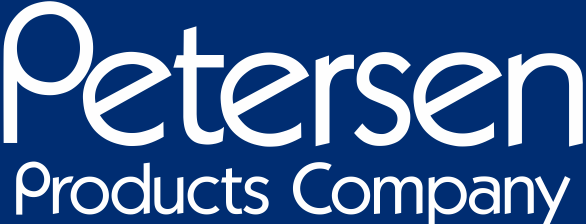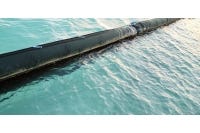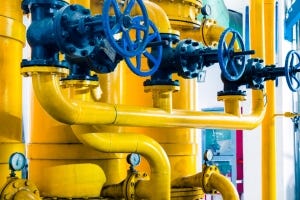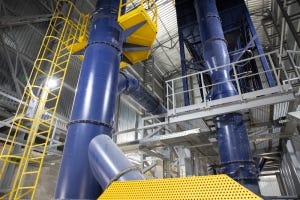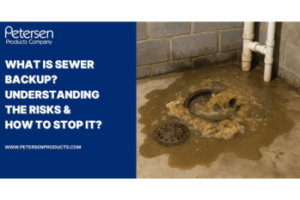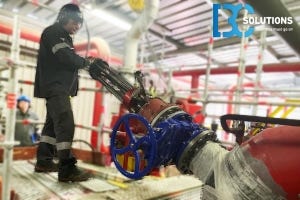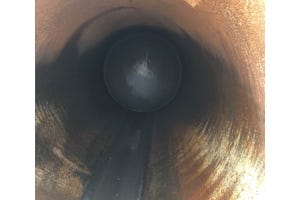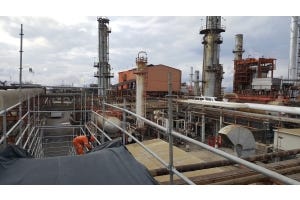Private Provo Beach Made More Beautiful


Providenciales, known as ‘Provo’ to locals, is one of the Turks and Caicos Islands, and is noted for the exceptional beauty of its many north shore resorts—in 2011, TripAdvisor rated Providenciales as the best “beach destination” in the entire world. And one of those destinations is Bajacu, a hilltop villa designed by famous Mexican architect Marco Aldaco.
Bajacu’s south shore location is unusual for Provo. Villa Manager Alanzo Barnett explains why. “Unlike the north shore, there really aren’t natural sandy beaches on this side of the island, and Bajacu’s owner is the first to create one here. He’s really been a pioneer in developing Providenciales’ south shore.”
Of course, because they are doing new things, pioneers are often the first ones to discover new challenges. In the case of Bajacu’s newly created beach, one of those unexpected challenges was Sargassum, a type of warm water macroalgae (seaweed); since the summer of 2015, in a development that may be related to rising sea temperatures, large quantities of Sargassum have begun to intermittently accumulate along the shores of many islands in the Caribbean Sea, including Providenciales. This is a problem for destinations like Bajacu, because piled up Sargassum is unsightly and obscures the clean white sand that makes Provo’s beaches so picturesque and desirable.
To protect the private beach and keep it beautiful, Bajacu’s owner installed a shallow net offshore to trap Sargassum. “It’s a long, fine mesh, about three feet deep, hanging on offshore booms,” Barnett explains. “The net catches the Sargassum before it gets to the beach, and periodically we clean it up and haul it off with raking boats, and the beach never gets trashy.”
So, a good system, but there was still a challenge to overcome. The booms that support the seaweed net are stuffed with inflatable bladders, 18 feet long and 15 inches in diameter, to make them float. And the bladders supplied when the new net was first delivered were not of good quality; the rubber was flimsy and did not wear well, leaks soon developed, and as the net sagged it became ineffective. To be clear, the overall net design was fine and worked well. But one particular component, the rubber bladders, failed and something more durable and effective was needed.
Enter Petersen Products, a Wisconsin-based firm that has been making high-quality inflatable products for over a hundred years, mostly for the oil and gas, and sewer, industries. Providing better bladders for a beach protection system was an unusual request, but it was something that was well within Petersen’s field of expertise. “Many of our inflatables are intended for use on offshore oil rigs, or in refineries or other extreme conditions,” Petersen President Phil Lundman explains. “So we know a lot about making durable bladders that have to be convenient to use and will hold up to seawater for a long time. Sure, this particular use was a new one for us, but we were glad to be asked and we designed and provided a good solution.”
Petersen Products ultimately provided six new bladders for use in Bajacu’s Sargassum protection system. All were 18-foot inflatable cylinders, 15-inches in diameter, and rated for inflation to 25 psi, and all were made of ethylene propylene diene monomer (EPDM), a synthetic rubber noted for extreme durability—some formulations are used for roofing applications. “EPDM is also known to be very resistant to caustic conditions, particularly salt water,” says Lundman. “In this application, even with the constant exposure to saltwater and tides, our bladders should hold up reliably for many years.”
Which means this particular luxury beach on Providenciales south shore will also “hold up reliably”—seaweed-free and spotlessly beautiful—for many years, thanks to the innovative use of an infrastructure solution more commonly employed in sewers or refineries or other industrial settings.

